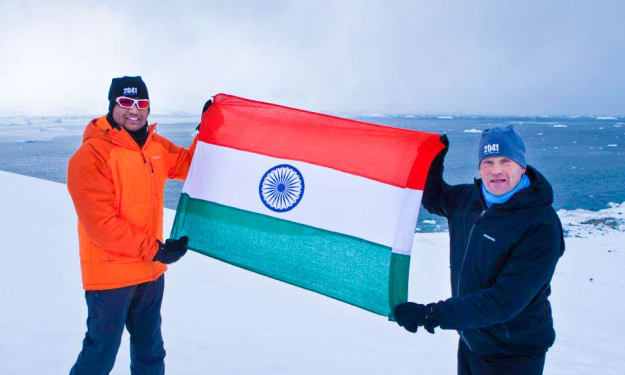
The Holocaust (1933–1945) was the systematic, state-sponsored persecution and murder of six million European Jews by the Nazi German regime and its allies and collaborators.1 The United States Holocaust Memorial Museum defines the years of the Holocaust as 1933–1945. The Holocaust era began in January 1933 when Adolf Hitler and the Nazi Party came to power in Germany. It ended in May 1945, when the Allied Powers defeated Nazi Germany in World War II. The Holocaust is also sometimes referred to as “the Shoah,” the Hebrew word for “catastrophe.”
When they came to power in Germany, the Nazis did not immediately start to carry out mass murder. However, they quickly began using the government to target and exclude Jews from German society. Among other antisemitic measures, the Nazi German regime enacted discriminatory laws and organized violence targeting Germany’s Jews. The Nazi persecution of Jews became increasingly radical between 1933 and 1945. This radicalization culminated in a plan that Nazi leaders referred to as the “Final Solution to the Jewish Question.” The “Final Solution” was the organized and systematic mass murder of European Jews. The Nazi German regime implemented this genocide between 1941 and 1945.
Throughout German-controlled and aligned territories, the persecution of Jews took a variety of forms:
1.Legal discrimination in the form of antisemitic laws. These included the Nuremberg Race Laws and numerous other discriminatory laws.
2.Various forms of public identification and exclusion. These included antisemitic propaganda, boycotts of Jewish-owned businesses, public humiliation, and obligatory markings (such as the Jewish star badge worn as an armband or on clothing).
3.Organized violence. The most notable example is Kristallnacht. There were also isolated incidents and other pogroms (violent riots).
4.Physical Displacement. Perpetrators used forced emigration, resettlement, View This Term in the Glossary expulsion, deportation, and ghettoization to physically displace Jewish individuals and communities.
5.Internment. Perpetrators interned Jews in overcrowded ghettos, concentration camps, and forced-labor camps, where many died from starvation, disease, and other inhumane conditions.
6.Widespread theft and plunder. The confiscation of Jews’ property, personal belongings, and valuables was a key part of the Holocaust.
7.Forced labor. Jews had to perform forced labor in service of the Axis war effort or for the enrichment of Nazi organizations, the military, and/or private businesses.
A new exhibition in New York presents photos by B. A. Van Sise of survivors of the Holocaust living in the United States.
On display at the Center for Jewish History, the exhibition, “Invited to Life: Holocaust Survivors in America,” features photographic prints as well as projections of dozens of Van Sise’s photographs.
Survivors portrayed include Engelina Billauer, Saul Dreier, Julius Eisenstein, Sally Frishberg, Betty Grebenschikoff, Alex Gross, Allan Hall, David Lenga, Toby Levy, Vernon Mosheim, Werner Reich, Toni and John Rinde, Irving Roth, Rabbi Arthur Schneier, Leon Sherman, Sam Silberberg, Martha Sternbach, Mireille Taub, Doris and Meir Usherovitz, Jack Waksal and Marion Wiesel.
The exhibition is being presented in honor of Waksal, who is 97.
According to a recent story in The Washington Post, he was born in the Polish village of Jedlinsk and was sent to Pionki, a forced labor camp in Poland and to the Sachsenhausen concentration camp in Germany. He escaped, lived in a forest for eight months and returned to Jedlinsk after the war, marrying a childhood friend. After living in a displaced persons camp in Germany, the couple moved to Dayton, Ohio. The article said Waksal is dedicated “to Holocaust education and (speaks) regularly to young people about (his) experiences in the war.”
According to the center, Van Sise traveled across the United States for four years to document the survivors.
“They are mothers, fathers, sons, and daughters who survived the unthinkable, yet had the strength and courage to come to the United States with the dream of creating a new and better life for themselves and their families,” said Bernard J. Michael, president and chief executive of the center. “This exhibition captures their incredible spirit and optimism. We are proud to honor them by sharing their inspiring stories.”
Van Sise’s book, Invited to Life, will be published in September.
His work has been featured in solo exhibitions at the Museum of Jewish Heritage – A Living Memorial to the Holocaust and Center for Creative Photography, as well as in group exhibitions at the Whitney Museum of American Art, Los Angeles Center of Photography and Peabody Essex Museum. Many of his portraits of American poets are in the permanent collection of the National Portrait Gallery in Washington.





Comments
Annee is not accepting comments at the moment
Want to show your support? Send them a one-off tip.